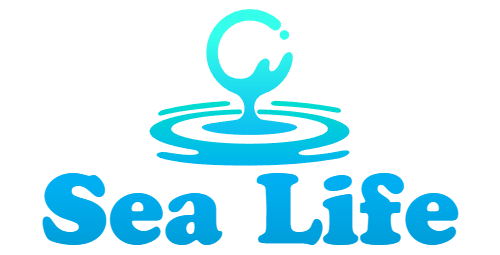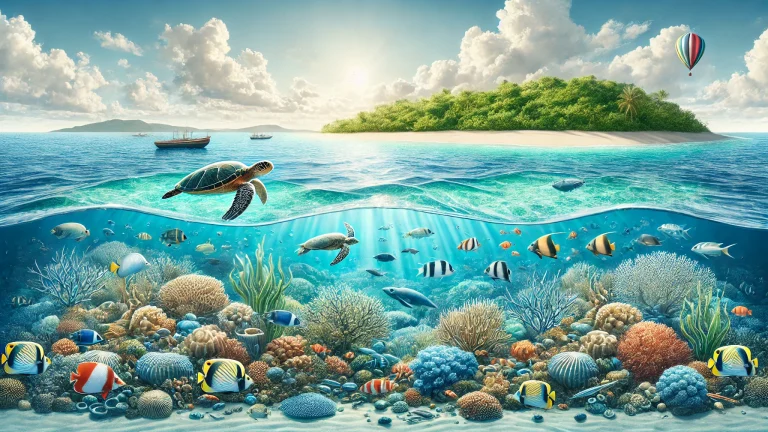The world’s oceans are home to an incredible array of species, many of which are currently facing severe threats due to human activities. Conservation efforts are crucial for protecting these endangered species and ensuring the health and diversity of marine ecosystems. At Sea Life, we are committed to fostering a healthy marine ecosystem where all wildlife can thrive. This article explores the essential roles that various conservation initiatives play in saving endangered ocean species.
Establishing Marine Protected Areas (MPAs)
Marine Protected Areas (MPAs) are designated regions of the ocean where human activities such as fishing, drilling, and development are restricted or entirely prohibited. These protected zones serve as safe havens for endangered species, allowing them to breed, feed, and grow without the pressures of human interference.
The Impact of MPAs
MPAs have been instrumental in the recovery of numerous endangered species. For example, the Papahānaumokuākea Marine National Monument in Hawaii, one of the largest MPAs in the world, provides critical habitat for the endangered Hawaiian monk seals and green sea turtles. By restricting harmful activities, MPAs help maintain biodiversity, improve fish stocks, and enhance ecosystem resilience.
Global Efforts
Countries around the world are recognizing the importance of MPAs. The goal set by the United Nations to protect 30% of the world’s oceans by 2030 highlights the global commitment to marine conservation. Establishing more MPAs and ensuring their effective management is vital for the long-term protection of oceanic wildlife.
Implementing Sustainable Fishing Practices
Overfishing is a significant threat to marine biodiversity, leading to the decline of many ocean species. Sustainable fishing practices aim to balance the demand for seafood with the need to protect fish populations and marine ecosystems.
Techniques and Regulations
- Catch Limits: Setting quotas on the number of fish that can be caught helps prevent overfishing and allows fish populations to recover.
- Gear Restrictions: Limiting the types of fishing gear used can reduce bycatch (the accidental capture of non-target species) and minimize habitat destruction.
- Marine Stewardship Council (MSC) Certification: Fisheries that meet MSC standards for sustainability are certified, encouraging consumers to choose responsibly sourced seafood.
Success Stories
The recovery of humpback whale populations is a testament to the success of sustainable fishing practices and international whaling bans. Similarly, stricter regulations and enforcement have led to the resurgence of many fish species that were previously on the brink of collapse.
Combating Pollution and Habitat Destruction
Pollution and habitat destruction are major threats to marine life. Coastal development, oil spills, and plastic pollution degrade critical habitats such as coral reefs, mangrove forests, and seagrass beds.
Restoration and Cleanup Efforts
- Beach Cleanups: Community-led beach cleanups help remove plastic waste and other debris, reducing the risk to marine life.
- Coral Reef Restoration: Techniques such as coral gardening and artificial reefs help restore damaged coral ecosystems.
- Mangrove Reforestation: Planting mangroves along coastlines provides essential habitat for many marine species and protects shorelines from erosion.
Reducing Plastic Waste
Reducing the production and use of single-use plastics is crucial for combating ocean pollution. Promoting reusable alternatives, improving recycling infrastructure, and supporting legislation that bans or restricts single-use plastics can significantly reduce the amount of plastic entering the ocean.

Conducting Research and Monitoring
Scientific research is the backbone of effective conservation. Understanding the biology, behavior, and population dynamics of endangered species is essential for developing strategies to protect them.
Advanced Technologies
- Satellite Tagging: Tracking the movements of marine animals provides valuable data on their migration patterns and habitat use.
- Genetic Analysis: Studying the genetic diversity of populations helps identify vulnerable species and informs breeding programs.
- Underwater Drones: These devices allow researchers to explore and monitor marine environments without disturbing the wildlife.
Data-Driven Conservation
The information gathered through research helps conservationists identify key habitats, assess the impact of human activities, and develop targeted conservation strategies. Long-term monitoring is crucial for evaluating the effectiveness of conservation measures and making necessary adjustments.
Raising Awareness and Engaging Communities
Public awareness and community involvement are critical components of successful conservation efforts. Educating people about the importance of marine biodiversity and the threats faced by ocean species can inspire action and foster a culture of conservation.
Education and Outreach
- School Programs: Teaching children about marine conservation fosters a sense of stewardship from a young age.
- Citizen Science Projects: Involving the public in data collection and research activities increases awareness and provides valuable information for scientists.
- Community Events: Organizing events such as beach cleanups and conservation workshops engages local communities and promotes collective action.
Empowering Local Communities
Engaging local communities in conservation efforts ensures that they have a stake in the protection of their marine resources. Providing education and economic incentives for sustainable practices can lead to lasting change and stronger support for conservation initiatives.
Advocating for Policy Changes
Strong policies and regulations are essential for the protection of marine species and their habitats. Conservation organizations play a key role in advocating for legislation that supports marine conservation.
Policy Initiatives
- Banning Harmful Fishing Practices: Policies that ban destructive fishing methods, such as bottom trawling and dynamite fishing, help protect marine habitats.
- Restricting Coastal Development: Implementing zoning laws and environmental impact assessments can prevent habitat destruction.
- Designating MPAs: Advocating for the creation and expansion of MPAs ensures long-term protection for critical marine habitats.
International Agreements
Global cooperation is essential for addressing transboundary marine conservation issues. Agreements such as the Convention on International Trade in Endangered Species (CITES) and the International Whaling Commission (IWC) are critical for the protection of endangered marine species.
Conclusion
Conservation efforts are making significant strides in saving endangered ocean species and preserving marine biodiversity. Establishing Marine Protected Areas, implementing sustainable fishing practices, combating pollution, conducting research, raising awareness, and advocating for policy changes are all vital components of a comprehensive conservation strategy. By working together and supporting these initiatives, we can ensure a healthier, more vibrant ocean for future generations. At Sea Life, we are dedicated to creating partnerships and promoting practices that safeguard marine ecosystems. Join us in our mission to protect ocean wildlife and preserve the incredible diversity of life beneath the waves.For more information and to get involved in ocean conservation efforts, visit Sea Life. Let’s work together to protect our oceans and the remarkable creatures that call them home.

